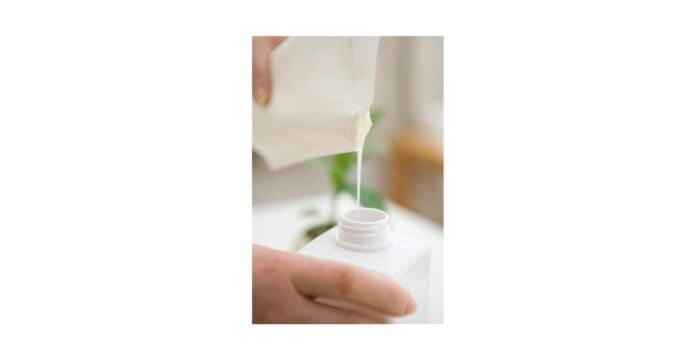To mark "World Refill Day" on June 16, 2025, Febea has published a study on consumer perceptions of the refill model.
Conducted by Senseva, with financial support from Citeo as part of the "EncoRE plus de réemploi" call for projects, this study aims to identify the essential levers for developing consumer acceptance and use of refill systems, and to propose actionable avenues for players in the cosmetics sector to encourage wider adoption. The aim is to transform current practices by integrating solutions that meet both consumer expectations and ecological challenges.
A growing craze among certain consumers
According to the study, 59 % of cosmetics consumers have purchased refills in the past year.
Two consumer segments in particular stand out:
- the "Beautistats & Tendance" (22 %): these consumers are young, sensitive to novelty, promotions and fun,
- the older "Green & Clean Beauty" group (23 %) are motivated above all by the ecological dimension.
The typical profile of the refill buyer is a woman aged 19 to 44, who is educated, active, has a high income, lives in a household of three or more people, and is a major cosmetics consumer.
Reducing environmental impact is cited by 70 % of users as the main advantage for using cosmetic refills, followed by the economic benefit, practicality, aesthetics and fun aspect of the refill.
Consumers also appreciate the opportunity to access better quality products at lower cost.
Perceptions, expectations and obstacles
Consumers identify two main refill mechanisms: pour-on refills (pouch or bottle to be decanted into a reusable container), preferred by 44 % of respondents, and insert refills (cartridge or cup to be placed in the container), favored by 38 % of them. Plug-in pouches are currently the best-known and most widely used.
However, a number of obstacles remain, such as the unavailability of refills in stores (44 %), lack of clear information, and fear of wastage, hygiene or safety when decanting (14 %), while 13 % are unaware that refills exist for certain cosmetic products.
Potential varies by product category
Consumers consider the potential of refills to vary according to product category. The current refill market is largely dominated by hygiene products (shower gels, shampoos). Next come body and face care products, fragrances (in third place), hair care products, cleansers and make-up removers.
On the contrary, other product families, such as toothpaste, make-up or baby products, seem less suited to this consumption pattern.
Levers to accelerate adoption
To encourage wider adoption of cosmetic refills, the study identifies several levers for action.
Improved in-store and online availability, clear information on ecological and economic benefits, and adapted formats (large capacity, on-the-go formats) are key expectations.
Attractive pricing, especially for low-price consumers, is also a key factor (63 %).
Product and packaging innovation, in particular the development of cap-type pouches, as well as targeted communication via social networks and beauty influencers, are effective ways of raising awareness of the benefits and use of refills.
Lastly, the study highlights the importance of working together on refills and reusable containers, to guarantee an optimal user experience and limit product waste. The success of cosmetic refills will depend on an innovative, visible offer adapted to each product category, as well as positive, educational communication.








